Archive | Regional cooperation and integration RSS feed for this section
Agriculture and natural resources, Infrastructure, Regional cooperation and integration
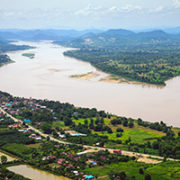 Economics, Governance and public sector management, Industry and trade, Regional cooperation and integration
Economics, Governance and public sector management, Industry and trade, Regional cooperation and integration
 Finance sector development, Industry and trade, Infrastructure, Regional cooperation and integration
Finance sector development, Industry and trade, Infrastructure, Regional cooperation and integration
 Industry and trade, Infrastructure, Regional cooperation and integration
Industry and trade, Infrastructure, Regional cooperation and integration
 Economics, Industry and trade, Regional cooperation and integration
Economics, Industry and trade, Regional cooperation and integration
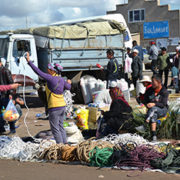 Economics, Environment, Finance sector development, Governance and public sector management, Industry and trade, Infrastructure, Regional cooperation and integration, Urban development
Economics, Environment, Finance sector development, Governance and public sector management, Industry and trade, Infrastructure, Regional cooperation and integration, Urban development
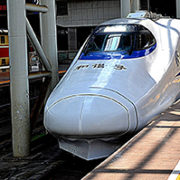 Economics, Governance and public sector management, Industry and trade, Regional cooperation and integration
Economics, Governance and public sector management, Industry and trade, Regional cooperation and integration
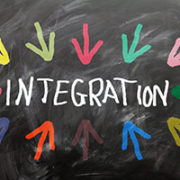 Industry and trade, Regional cooperation and integration
Industry and trade, Regional cooperation and integration
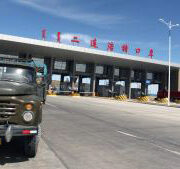 Industry and trade, Regional cooperation and integration
Industry and trade, Regional cooperation and integration
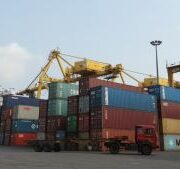 Infrastructure, Regional cooperation and integration
Infrastructure, Regional cooperation and integration
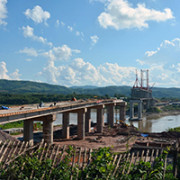
Perspectives on Mekong-Japan cooperation for inclusive growth and mutual benefits

Rapid economic development in recent decades has transformed Southeast Asia and prepared the region to join international production networks, which allow greater exports of manufacturing products, textiles, and other primary high-quality valued added products to the international market. This economic development has been achieved thanks to investments from around the globe into the region as a result of a favorable labor force, connectivity and innovation growth, and regional political stability as driven by the Association of Southeast Asian Nations (ASEAN) vision.
Impact of Retaliatory Trade Enforcement Actions on the World Trade Organization and Trade Governance

The international regulatory instruments in international trade boast a remarkable story of evolving sophistication. Their transformation from voluntary export restraint agreements showed that the world trade system was poised to keep pace with rapidly expanding trade ties and diversifying supply chains. To keep the reins on an increasingly dynamic global trade system, the General Agreement on Tariffs and Trade (GATT) sought to formalize instruments that would help keep trade balanced and fair by isolating international trade from government intervention, in alignment with the economic thinking of the period: neoliberal convergence.
Next generation of quality development and investment in the new Pacific trade pact

Earlier this month, the Pacific trade pact was reborn in Santiago as the 11-nation Comprehensive and Progressive Agreement for Trans-Pacific Partnership. While the headlines have been dominated by the absence of the United States and the level of trade gains each nation hopes to enjoy, let’s focus here on three less-remarked-upon sections of this revised treaty among Australia, Brunei Darussalam, Canada, Chile, Japan, Malaysia, Mexico, New Zealand, Peru, Singapore, and Viet Nam (the TPP11).
One Belt One Road and the Risks Behind the Win-Win Situation

The New Silk Road Initiative was originally unveiled by Chinese President Xi Jinping in 2013 and became known as the Belt and Road Initiative (BRI). From the beginning, the initiative was presented as a reestablishment of the trade routes that were successful many centuries ago. The initiative was also a call for partner countries to accelerate transport infrastructure improvements and connectivity to boost trade. Through active diplomacy and intense public relations, 65 countries felt they had to join the initiative with the prospect of Chinese financial assistance.
Time for SMEs in CAREC to move beyond borders

One of the most daunting challenges for the countries participating in the Central Asia Regional Economic Cooperation (CAREC) program is how to create decent, sustainable jobs. For far too long, many CAREC countries have relied on the capital-intensive extractives sector to drive their economic growth. However, the slowing down of the global economic growth and reduced commodity prices resulted in the substantial increase in unemployment, especially among the youth.
The PRC’s international capacity cooperation exports both industrial capacity and financial risk

International capacity cooperation (国际产能合作guoji channeng hezuo) was a 2014 addition to the “Go Global” policy suite that the People’s Republic of China’s (PRC) central bureaucracy expanded throughout 2016. It is the result of seeking a way forward from “new normal” low industrial growth rates and is a novel solution to the industrial capacity utilization problems the PRC has suffered since the 2008–2009 spending stimulus flooded into traditional industries. Steel, cement, aluminum, paper, glass, and everything from pork production to robots are in 2017 mired in cyclical overcapacity.
Will 2025 be the final deadline for the ASEAN Economic Community?

The Association of Southeast Asian Nations (ASEAN) fell short of its target of realizing the ASEAN Economic Community (AEC) by the end of 2015, deferring 105 of its 506 measures. A successor blueprint called the AEC Blueprint 2025, which lays out the work for ASEAN economic integration in the next 10 years, was adopted at the 27th ASEAN Summit in November 2015.
TPP and RCEP – friends not foes

Talks just concluded in Auckland, New Zealand on Saturday show that plans for the Regional Comprehensive Economic Partnership (RCEP) are advancing. Just as both Hillary Clinton and Donald Trump, the next potential leaders of the Trans-Pacific Partnership’s (TPP) biggest partner—the US—have distanced themselves from the agreement. Some even suggest that the US Congress won’t ratify the TPP agreement, and warn that the world economy risks US isolationism.
RCEP – a life raft for trade liberalization in Asia

There seems to be a pushback against trade agreements in the post global financial crisis era. The Trans-Pacific Partnership (TPP) was signed in early 2016, but US presidential candidates have spared no effort criticizing it so near-term ratification is highly uncertain. The WTO Doha Round is in the deep freeze after 14 years of negotiations. Unilateral trade liberalization has virtually come to a standstill.
Boosting South Asia integration through the realization of dream projects

Despite strong linkages in the past during the colonial period and strong ethnic and traditional ties, South Asian countries have become increasingly more diverse since their independence. While they are geographically closely connected, this does not mean that they are well integrated. Countries in the region have vastly different sizes, populations, and topography, and there are significant differences in their economies and income per capita. The conditions, however, might be ripe for a boost in regional integration. Implementing highly visible and symbolic transport connectivity projects, which have long been considered as dream realizations, would trigger the acceleration of regional integration for the benefit of all.


Search
Subscribe / Connect to Asia Pathways
Subjects
- Agriculture and natural resources
- Blog
- Capacity development
- Climate change
- Economics
- Education
- Energy
- Environment
- Finance sector development
- Gender
- Governance and public sector management
- Health
- Industry and trade
- Information and Communications Technology
- Infrastructure
- Miscellaneous
- Population
- Poverty
- Private sector development
- Regional cooperation and integration
- Sanitation
- Social development and protection
- Transport
- Uncategorized
- Urban development
- Video Blog
- Water
Recent Posts
- Navigating Linear Transport Infrastructure Through Conservation Landscapes
- How Are Technology Trends Shaping the Future of Insurance?
- Securing Asia’s Future Through Soil Health: Why It Matters and What Must Be Done
- Silent Struggles: Advancing Women’s Mobility with Public Transportation in Asia
- Mind Your Neighbors: Measuring Shrimp Farm Spillovers




Recent Comments